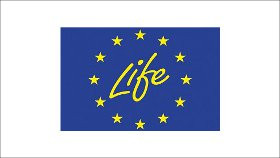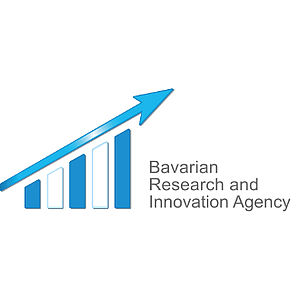
LIFE Programme

(updated on 10 December 2025)
The LIFE programme aims to enable the transition to a sustainable, circular, energy-efficient, renewable energy based, climate-neutral and resilient economy in order to protect, restore and improve the quality of the environment, including air, water and soil, halt and reverse the loss of biodiversity and combat the deterioration of ecosystems.
With these specifications, the LIFE Programme as a whole contributes fully to the objectives of the European Green Deal, which aim,
- to transform the EU into a just and prosperous society with a modern, resource-efficient and competitive economy where there will be no net greenhouse gas emissions in 2050 and where economic growth will be decoupled from resource consumption.
- to protect, conserve and improve the EU’s natural capital and to protect citizens’ health and well-being from environmental and climate-related risks and impacts.
Budget
The LIFE funding programme budget is €5.43 billion between 2021 and 2027.
Focal points
The following sub-programmes shall be promoted under the "LIFE" programme:
- Nature conservation and biodiversity
- Objective: To promote and integrate the implementation of the EU’s policy objectives to curb and reverse the loss of habitats and species of wild fauna and flora in all sectors and the implementation of objectives of the Biodiversity Strategy for 2030;
- Circular economy and quality of life
- Objective: To support the transition to a circular economy and the protection and improvement of the quality of the EU’s natural resources, including air, soil and water;
- Climate protection and climate adaptation
- Objective: To support the implementation of the 2030 Energy and Climate Framework, the 2050 EU Objective of Climate Neutrality and the New EU Strategy on Adaptation to Climate Change;
- Energy transition
- Objective: To build capacity, promote investment and support the implementation of measures geared towards energy efficiency and small-scale renewable energies.
Different types of measures
The LIFE Programme contains different types of measures with their own objectives and rules. These are briefly summarised:
- Standard Action Projects (SAPs) – max. 10-year funding period: They can be found in all four LIFE sub-programmes and represent the traditional LIFE projects, for example with the aim of developing, demonstrating and promoting innovative techniques, methods and approaches. The general funding rate for SAPs is 60%. 67% funding rate is covered for projects with priority habitats or species and 75% for projects with priority habitats only or species according to the European Red List or IUCN Red List.
- Strategic Nature Projects (SNAPs) – max. 14-year funding period: This measure is only part of the sub-programme “Nature conservation and biodiversity”. It shall support the achievement of the Union’s objectives in the field of nature and biodiversity by implementing coherent action programmes in the Member States by anchoring those objectives in other measures and financial instruments. The funding rate is 60%.
- Strategic Integrated Projects (SIPs) – max. 14-year funding period: From 2021 to 2024, with this measure investment will only be made in the sub-programmes “Circular economy and quality of life” and “Climate protection and climate adaptation”. It shall support projects, environmental or climate strategies or action plans at the regional, multi-regional, national or transnational level developed by Member State authorities and required by specific Union environmental, climate or relevant energy regulation or Union policy. The funding rate is 60%.
- Technical Assistance Projects (TAs) – max. 5-year funding period: This measure is reflected in all four LIFE sub-programmes. It supports other projects in the preparation of SAPs or SNAPs and SIPs, or contributes to capacity building for Member State authorities, for example to improve applications. The funding rate of TA-PP (i.e. preparation of SNAPs and SIPs) is 60%, but max. €70,000.
- Other Actions (OAs) – max. 10-year funding period: This measure also occurs in all four LIFE sub-programmes. These include different projects, such as coordination and support actions (CSAs) for the transition to renewable energy and higher energy efficiency, or projects contributing to the objectives and implementation of the EU Circular Economy Action Plan implemented by universities, research institutions, enterprises and/or SMEs participating in a KIC. The funding rate is max. 95%.
- Operating grants for NGOs – max. 3-year funding period: Operating and administrative costs of max. 30 to 40 non-profit organisations, known as NGOs, can be supported per funding period. The funding rate is 70%.
Who can participate in LIFE?
You are eligible to submit a proposal under the LIFE Programme, if you are:
- a public or private legal entity registered in the EU or an overseas country or territory linked to it;
- a third country associated to the LIFE programme; or
- a legal entity created under Union law or any international organisation.
Natural persons are not eligible to apply.
Legal entities established in a third country which is not associated to the LIFE Programme may exceptionally eligible to participate where this is necessary for the achievement of the objectives of a given action to ensure the effectiveness of interventions carried out in the Union. However, those legal entities shall in principle bear the cost of their participation.
Current tenders in LIFE
The EU continuously publishes tenders on the Funding & Tender Opportunities Portal.
Further information on the LIFE Programme on the Web
Contact at BayFOR:

M. Sc. Sebastian Botzler
Scientific Officer
Environment, Energy & Bioeconomy
Phone: +49 89 9901888-123
Email: botzler@no-spam-pleasebayfor.org




